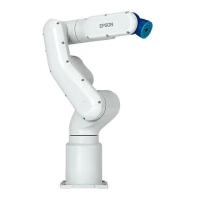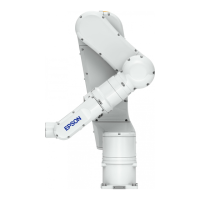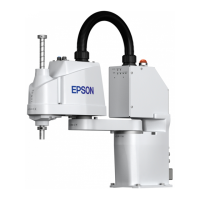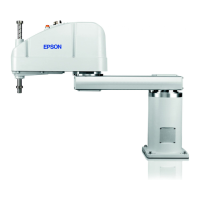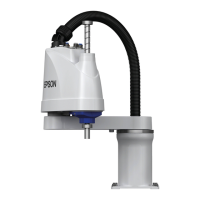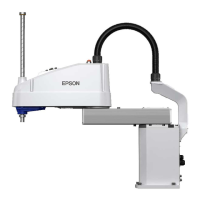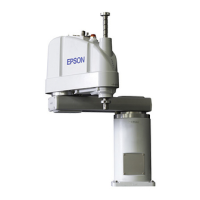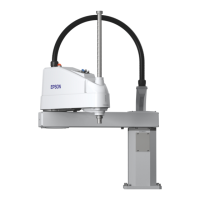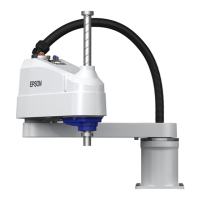20. Restrictions
250 VT Rev.1
20.3.2 PG Commands
If executing PG commands, motion error occurs.
PG_FastStop Stops the PG axes immediately.
PG_LSpeed Sets the pulse speed of the time when the PG axis starts
accelerating and finishes decelerating.
PG_Scan Starts the continuous spinning motion of the PG robot axes.
PG_SlowStop Stops slowly the PG axis spinning continuously.
20.3.3 R-I/O Commands
If executing R-I/O commands/functions, motion error occurs.
LatchEnable Enable/Disable the latch function for the robot position by the
R-I/O input.
LatchState Function Returns the latch state of robot position using the R-I/O.
LatchPos Function Returns the robot position latched using the R-I/O input
signal.
SetLatch Sets the latch function of the robot position using the R-I/O
input
20.3.4 Force Sensing Commands
If executing force sensing commands/functions, motion error occurs.
Force_Calibrate Sets zero offsets for all axes for the current force sensor.
Force_ClearTrigger Clears all trigger conditions for the current force sensor.
Force_GetForces Returns the forces and torques for all force sensor axes in an
array.
Force_GetForce Function Returns the force for a specified axis.
Force_Sensor Sets the current force sensor for the current task.
Force_Sensor Function Returns the current force sensor for the current task.
Force_SetTrigger Sets the force trigger for the Till command.
20.3.5 Other (FineDist)
You cannot use the command: FineDist
Robot determines the position by set value of Fine even if using FineDist.
Fine Specifies and displays the positioning error limits.
(Unit: pulse)
FineDist Specifies and displays the positioning error limits (Unit: mm)
20.3.6 Other (HealthCalcPeriod)
You cannot use the command: HealthCalcPeriod
A period of parts consumption commands information to calculate “remaining months” is
one day and unable to change.
HealthCalcPeriod Set the calculation period of parts consumption commands.
HealthCalcPeriod Function Returns the calculation period of parts consumption
commands.
20.3.7 Other (ChDisk)
You cannot specify USB option to the command: ChDisk
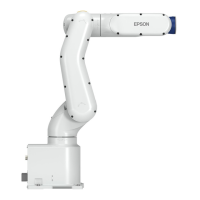
